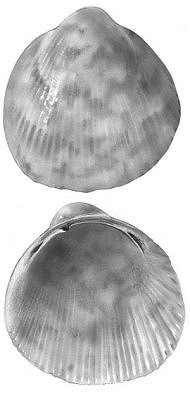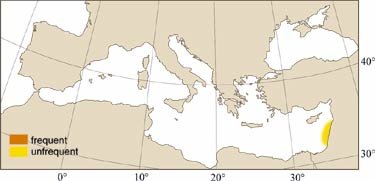
|
Relevant Synonyms
Misidentification
|
|
| drawing: Tuvia Kurz |
|
SHORT
DESCRIPTION
color :
very variable; externally from white to dark brown purple. Juveniles usually more colored than adults. Internally white to yellow or light pink.
common size :
to 35 mm in height. |
DISTINGUISHING CHARACTERISTICS
BIOLOGY / ECOLOGY
habitat :
littoral to shallow water but also dredged from deeper waters 31-73 m in unknown substratum (Barash and Danin, 1992). Seems to prefer clean reefal or perireefal facies (Vidal, 1994). |
|
1st
Mediterranean record
|

|
|
DISTRIBUTION
|
ESTABLISHMENT SUCCESS
speculated reasons for success :
|
|
|
MODE OF
INTRODUCTION |
IMPORTANCE TO
HUMANS |
|
KEY
REFERENCES
|
|
|
 Cardium striatum Spengler, 1799
Cardium striatum Spengler, 1799